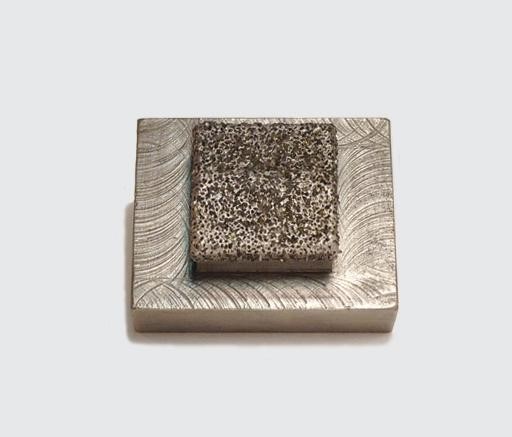
In addition to TIR (total indicator runout) is the dimension of the grinding wheel side flutter, runout, roundness and tolerance. This is accomplished by truing, dressing, forming and conditioning.
Conventional and ceramic precision abrasive grinding wheels are trued by diamond single points, hand-set diamond clusters, diamond form blocks or rolls, blade tools, or any other means of truing, to bring the precision abrasive grinding wheel surface to within 0.0005" TIR straight and formed.
The same goes for diamond grinding wheels. CBN grinding wheels are different. They must be trued to within 0.000040" TIR straight or with a form. The reason being is that in precision grinding hard metals the swarf becomes threadlike chips and can only be made to grind correctly if the fine metal threads are formed consistently. This requires a lubric grinding coolant (8:1 mix) or with straight oil. Keep your infeeds in dressing down below 0.001" to avoid crushing the bonds.
Diamond coated dressing blocks have been designed for optimal performance on conventional and ceramic grinding wheels. Ideal for roughing and finish dressing.
A PB1 diamond-coated dressing block is 1" square for truing abrasive wheels 8" in diameter and smaller. (Shown)
An RB1 diamond-coated dressing block is 1 1/2" in diameter for truing abrasive wheels 8" diameter and larger.
Related Glossary Terms
- abrasive
abrasive
Substance used for grinding, honing, lapping, superfinishing and polishing. Examples include garnet, emery, corundum, silicon carbide, cubic boron nitride and diamond in various grit sizes.
- coolant
coolant
Fluid that reduces temperature buildup at the tool/workpiece interface during machining. Normally takes the form of a liquid such as soluble or chemical mixtures (semisynthetic, synthetic) but can be pressurized air or other gas. Because of water’s ability to absorb great quantities of heat, it is widely used as a coolant and vehicle for various cutting compounds, with the water-to-compound ratio varying with the machining task. See cutting fluid; semisynthetic cutting fluid; soluble-oil cutting fluid; synthetic cutting fluid.
- cubic boron nitride ( CBN)
cubic boron nitride ( CBN)
Crystal manufactured from boron nitride under high pressure and temperature. Used to cut hard-to-machine ferrous and nickel-base materials up to 70 HRC. Second hardest material after diamond. See superabrasive tools.
- dressing
dressing
Removal of undesirable materials from “loaded” grinding wheels using a single- or multi-point diamond or other tool. The process also exposes unused, sharp abrasive points. See loading; truing.
- grinding
grinding
Machining operation in which material is removed from the workpiece by a powered abrasive wheel, stone, belt, paste, sheet, compound, slurry, etc. Takes various forms: surface grinding (creates flat and/or squared surfaces); cylindrical grinding (for external cylindrical and tapered shapes, fillets, undercuts, etc.); centerless grinding; chamfering; thread and form grinding; tool and cutter grinding; offhand grinding; lapping and polishing (grinding with extremely fine grits to create ultrasmooth surfaces); honing; and disc grinding.
- grinding wheel
grinding wheel
Wheel formed from abrasive material mixed in a suitable matrix. Takes a variety of shapes but falls into two basic categories: one that cuts on its periphery, as in reciprocating grinding, and one that cuts on its side or face, as in tool and cutter grinding.
- straight oil
straight oil
Cutting fluid that contains no water. Produced from mineral, vegetable, marine or petroleum oils, or combinations of these oils.
- swarf
swarf
Metal fines and grinding wheel particles generated during grinding.
- tolerance
tolerance
Minimum and maximum amount a workpiece dimension is allowed to vary from a set standard and still be acceptable.
- total indicator runout ( TIR)
total indicator runout ( TIR)
Combined variations of all dimensions of a workpiece, measured with an indicator, determined by rotating the part 360°.
- truing
truing
Using a diamond or other dressing tool to ensure that a grinding wheel is round and concentric and will not vibrate at required speeds. Weights also are used to balance the wheel. Also performed to impart a contour to the wheel’s face. See dressing.






